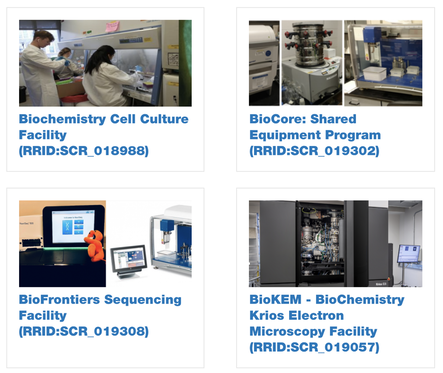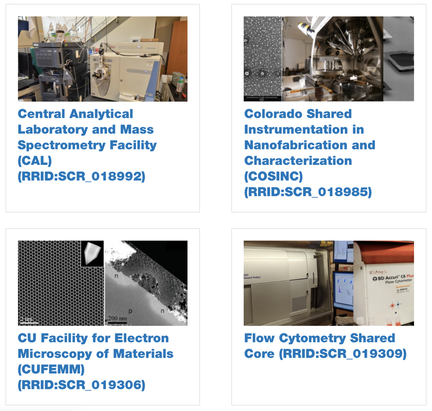Ideas on how institutions can connect efficiency to research funding:
Research institutions, such as universities, can take action, too, to connect efficiency expectations and sustainability to their institutional investments in research and lay a cultural foundation to inspire such actions/requests on the part of scientists.
|
Examples of Core Facilities at CU BoulderSmart Labs Toolkit |



